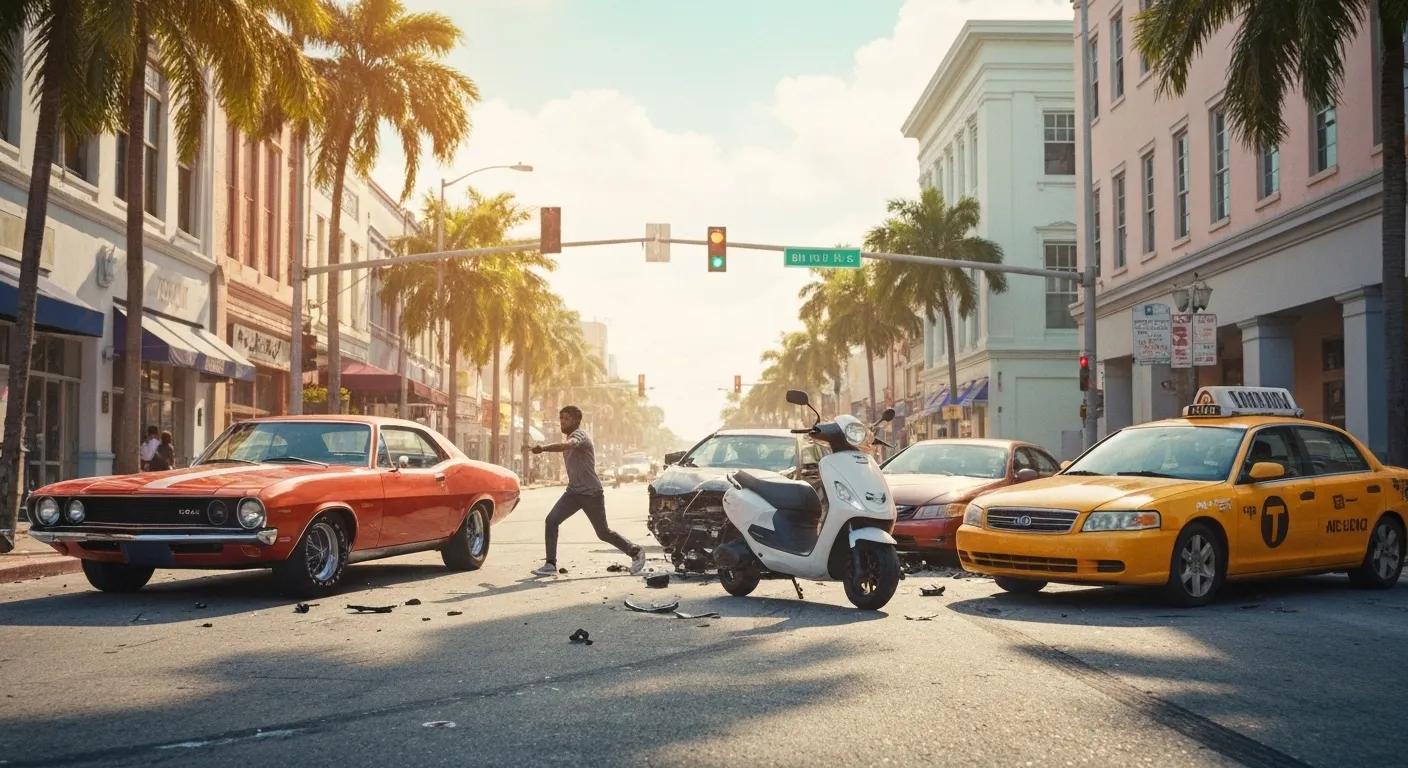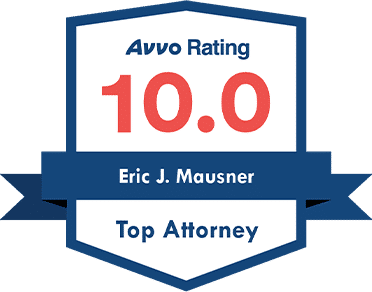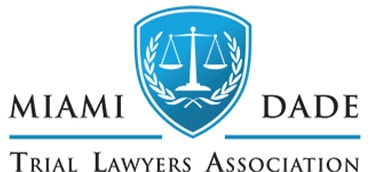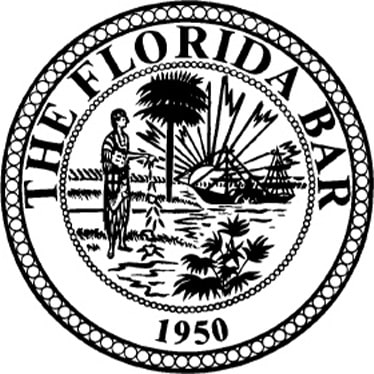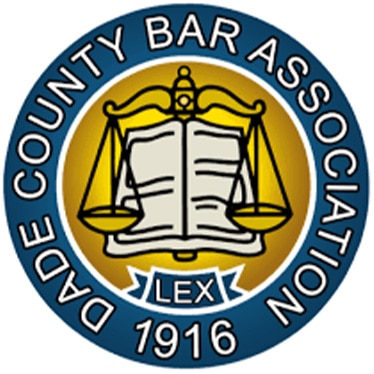Miami-Dade County averages over 170 motor vehicle crashes every single day, making common vehicle collision types in Miami a critical concern for residents and visitors alike. Suffering injuries in any crash can be physically and financially devastating, yet understanding how different accident types occur and how they link to compensation offers victims a clear path forward. This article breaks down the most frequent collision types in Miami, examines their causes and typical injuries, explores local traffic factors, outlines critical legal implications, and provides actionable prevention strategies. Throughout, you’ll learn how MG Injury Firm’s free consultations and experienced representation support victims in securing maximum compensation. At MG Injury Firm, we’ve seen firsthand how different crash types require unique legal strategies — and we use our courtroom experience to build every case for maximum impact.
What Are the Most Common Vehicle Collision Types in Miami?
All Miami motorists face a variety of crash scenarios, but some collision types outnumber others and present unique risks. The following overview highlights the five most prevalent accident categories, preparing you for detailed insights in subsequent sections.
- Rear-End Collisions
- Side-Impact (T-Bone) Accidents
- Head-On Collisions
- Rollover Accidents
- Sideswipe Accidents
Exploring these collision types lays the groundwork for understanding their causes, injuries, and legal consequences in Miami’s busy road network.
Which Collisions Occur Most Often in Miami-Dade County?
Rear-end collisions top the list, accounting for nearly 30 percent of all crashes, closely followed by side-impact accidents at intersections. High daily traffic volume and frequent stop-and-go conditions on arterial roads like Biscayne Boulevard and Flagler Street drive these numbers upward. This prevalence underscores why defensive driving tactics focus on maintaining safe following distances first.
How Do Rear-End Collisions Impact Miami Drivers?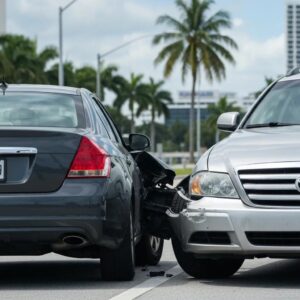
Rear-end collisions occur when one vehicle strikes the back of another, often in heavy traffic or at red lights.
- Definition + Mechanism + Benefit: A rear-end collision happens when a trailing vehicle fails to brake in time, transferring impact energy into the lead car’s frame.
- Specific Benefit of Understanding: Recognizing this pattern helps victims document brake lights, skid marks, and following distances to prove liability and pursue compensation.
Key factors include distracted driving, sudden stops, and tailgating. Transitioning from this type, side-impact accidents introduce different intersection-related hazards.
What Are Side-Impact (T-Bone) Accidents and Where Do They Happen in Miami?
Side-impact, or T-bone, collisions happen when a vehicle’s front strikes another’s side panel — often at uncontrolled or poorly timed traffic signals.
- Collision Type
- Common Cause
- Miami Hotspot
- Side-Impact (T-Bone)
- Failure to yield at turns
- Intersection of SW 8th Street & 27th Ave
- Side-Impact (T-Bone)
- Running red lights
- NW 36th Street & Miami Gardens Drive
This breakdown clarifies why certain junctions rank among Miami’s most dangerous. Recognizing those locations prepares drivers to reduce risk and supports attorneys in linking crash sites to negligence.
Why Are Head-On Collisions Particularly Dangerous in Miami?
Head-on collisions occur when two vehicles traveling in opposite directions collide front-to-front, often at high speeds. The combined force doubles injury potential, leading to catastrophic outcomes such as traumatic brain injury or fatalities. Understanding these dynamics highlights the need for careful lane management on roads like US-1 and the Florida Turnpike.
What Role Do Rollover and Sideswipe Accidents Play in Miami Traffic?
Rollover crashes involve one or more vehicles tipping onto their side or roof, commonly linked to sharp turns at speed or collisions with curbs. Sideswipe accidents occur during lane-changes or merges when vehicles brush along each other’s sides. Although less frequent, rollovers carry a high fatality rate and sideswipes often trigger secondary pile-ups. Examining these patterns completes our overview of Miami’s top collision types and sets the stage for analyzing root causes next.
Get Your FREE Case Review Today
What Causes Vehicle Collisions in Miami? Exploring Miami Auto Accident Causes
Every collision type stems from underlying causes that can be mitigated with awareness. Distracted driving, speeding, reckless behaviors, poor road conditions, and impairment top the list.
How Does Distracted Driving Lead to Miami Car Accidents?
Distracted driving occurs when motorists divert attention to phones, navigation systems, or passengers instead of the road. This lapse in focus reduces reaction time, making rear-end and sideswipe collisions far more likely on busy corridors. Identifying distraction evidence — call logs, dash cam footage — empowers injured parties to demonstrate fault clearly.
Why Is Speeding a Major Factor in Miami Vehicle Collisions?
Speeding amplifies crash severity by increasing stopping distances and impact energy. In Miami’s tourism-heavy areas, drivers unfamiliar with local speed limits on highways and expressways accelerate risk. Recognizing speed as a critical cause helps victims obtain expert accident reconstruction to quantify negligence.
How Do Failure to Yield and Reckless Driving Contribute to Miami Crashes?
Failure to yield — especially at uncontrolled intersections — triggers many side-impact collisions, while reckless maneuvers like aggressive lane changes and tailgating escalate collision risks citywide. Highlighting these aggressive actions often uncovers traffic violations that strengthen liability claims during compensation negotiations.
What Are the Effects of Poor Road Conditions on Miami Accidents?
Potholes, faded lane markings, and inadequate signage degrade roadway safety, turning minor lapses into major crashes. Documenting road defects and linking them to municipal maintenance records can establish a shared liability between drivers and responsible agencies.
How Does Impaired Driving Increase Collision Risks in Miami?
Alcohol and drug impairment significantly slow reaction times and impair judgment. Drunk-driving incidents escalate head-on and rollover accidents, especially during nightlife hours in districts like South Beach. Toxicology reports and police records serve as powerful evidence for seeking punitive damages.
What Injuries Are Common in Different Miami Vehicle Collision Types?
Each crash type produces characteristic injuries that influence medical treatment, rehabilitation, and claim value. Detailed injury profiles bolster a victim’s case by aligning symptoms with collision mechanics.
Injury Patterns in Vehicle Collisions
Studies show that the type of collision directly influences the injuries sustained by those involved. For example, rear-end collisions often result in whiplash and soft tissue injuries, while side-impact collisions can lead to more severe injuries like spinal cord trauma.
What Injuries Result from Rear-End Collisions in Miami?
Injuries include:
- Whiplash – Strain of cervical spine ligaments
- Soft tissue damage – Bruising to muscles and tendons
- Concussion – Mild brain injury from sudden head movement
Documenting neck pain onset and photographing bruising supports medical causation and maximizes compensation potential.
Which Injuries Are Typical in Side-Impact (T-Bone) Accidents?
Injuries include:
- Spinal cord injury – Risk of paralysis from lateral forces
- Broken bones – Fractures of pelvis or legs from direct side impact
- Internal organ damage – Impact on liver or spleen from door intrusion
Detailed medical records tied to crash diagrams help establish injury severity for insurance adjusters and juries.
What Catastrophic Injuries Occur in Head-On Collisions?
Injuries include:
- Traumatic brain injury – Bleeding or swelling within the skull
- Severe chest trauma – Flail chest, ruptured organs
- Fatalities – Immediate or delayed due to internal bleeding
These catastrophic outcomes justify comprehensive legal action and pursuit of maximum compensation.
How Do Rollover Accidents Cause Severe Trauma?
Injuries include:
- Multiple fractures – Compound breaks in arms, legs, pelvis
- Spinal compression – Vertebral damage from axial loading
- Ejection wounds – Severe trauma when not properly restrained
Proving seatbelt use and roof integrity informs product-liability or vehicle-design claims.
What Injuries Affect Pedestrians and Cyclists in Miami?
Injuries include:
- Lower extremity fractures – Tibia, fibula, femur breaks
- Head injuries – Skull fractures, concussions from being thrown
- Road rash and lacerations – Abrasions from asphalt sliding
Highlighting these injury patterns supports claims under Florida’s pedestrian-safety statutes.
How Does Miami’s Local Traffic Environment Influence Vehicle Collision Types?
Miami’s unique traffic mix and climate shape collision patterns. Congestion, tourism, weather, and hit-and-run trends directly affect accident types and frequencies.
Which Miami Intersections Are Most Dangerous for Side-Impact Collisions?
Intersections with high angular traffic flows, such as Coral Way & 57th Ave and NW 8th St & 27th Ave, report elevated T-bone crash rates. Concentrated tourist driving and unclear signage at these junctions exacerbate side-impact risks, underlining the importance of local collision data when building a legal case.
How Does Miami’s Traffic Volume and Tourism Affect Accident Rates?
Annual visitor influx and daily commuter volume strain roads, increasing stop-start traffic and unfamiliar drivers. These conditions elevate rear-end crashes and sideswipe incidents, pointing to how seasonal patterns inform crash prevention and legal strategy.
Why Are Hit-and-Run Accidents Prevalent in Miami-Dade County?
Hit-and-run incidents spike in areas with nightlife and rental vehicles, driven by impaired drivers fearful of legal consequences. With over 21,000 hit-and-run crashes in 2023, victims often need uninsured motorist claims and aggressive legal pursuit to recover damages. MG Injury Firm handles hit-and-run cases throughout Miami-Dade and has recovered substantial compensation through UM coverage, surveillance review, and law enforcement coordination.
How Do Miami Road and Weather Conditions Impact Collision Risks?
Tropical rainstorms reduce visibility and traction, turning minor driving errors into collisions. Flash floods on low-lying streets like SW 8th St can lead to hydroplaning rollovers. Documenting weather reports alongside crash details strengthens causation arguments.
What Are the Legal Implications of Different Vehicle Collision Types in Miami?
How Is Fault Proven in Rear-End and Side-Impact Collisions?
Proving fault in rear-end crashes hinges on demonstrating the trailing driver’s negligence, often through brake-light photos, witness testimony, and traffic citations. In side-impact cases, establishing right-of-way violations at intersections requires traffic-signal data and police reports.
What Legal Steps Should Victims Take After a Head-On or Rollover Accident?
Victims should secure medical records, obtain accident reconstruction reports, and preserve vehicle damage evidence before speaking to insurers. Prompt evidence collection in catastrophic crashes can be critical for proving liability and seeking punitive damages.
How Can Victims of Hit-and-Run Accidents Pursue Compensation in Miami?
Uninsured motorist coverage under Florida law allows hit-and-run victims to claim their own insurance policy when a fleeing driver cannot be identified. Gathering police reports and any available surveillance footage supports these claims effectively.
What Role Do Miami Personal Injury Lawyers Play in Securing Maximum Compensation?
Experienced attorneys investigate crash scenes, work with medical experts to quantify injuries, negotiate assertively with insurers, and litigate when necessary. By leveraging local traffic data and injury documentation, legal counsel ensures victims recover medical expenses, lost wages, pain and suffering, and more.
Contact us today for your free & confidential case review. Our team will help you get the compensation that you deserve.
How Can Miami Drivers Prevent Common Vehicle Collisions?
Educated drivers serve as the first line of defense against crash risks by adopting proactive safety measures and local knowledge.
What Safety Practices Reduce Rear-End and Side-Impact Accidents?
Adopt a two-second following distance in clear weather and extend to four seconds when wet. Always scan intersections for changing signals and reduce speed before entering cross-traffic zones. These defensive driving habits directly lower the odds of being struck from behind or the side.
How Can Drivers Avoid Distracted and Reckless Driving in Miami?
Eliminate phone use by activating “Do Not Disturb” modes and set navigation routes before departing. Respect speed limits, especially in construction zones, and resist aggressive lane changes. These behavioral adjustments significantly reduce collision exposure across all crash types.
What Are Key Pedestrian and Bicycle Safety Laws in Miami?
Florida law requires drivers to yield to pedestrians in crosswalks and maintain at least three feet of clearance when passing cyclists. Awareness of these statutes and yielding properly at marked lanes fosters safer multimodal road sharing.
How Does Awareness of Miami’s Dangerous Intersections Help Prevent Crashes?
Familiarity with local crash hotspots, such as the US-1 corridor near downtown, allows drivers to adjust speed and approach patterns. Knowledge of high-risk junctions empowers motorists to anticipate other vehicles’ actions and avoid T-bone collisions.
What Should Miami Vehicle Collision Victims Know About Legal Help and Compensation?
Navigating post-accident recovery involves timely legal steps and understanding potential compensation categories. MG Injury Firm stands ready with free consultations to guide every phase of your claim.
How Does MG Injury Firm Assist Miami Car Accident Victims?
MG Injury Firm provides no-cost case evaluations, arranges prompt injury documentation, and collaborates with top accident reconstruction experts. This client-focused approach ensures personalized strategies and aggressive advocacy from day one.
What Types of Compensation Can Miami Accident Victims Expect?
Victims may recover:
- Medical Expenses – Past and future treatment costs
- Lost Wages – Income lost during recovery and diminished earning capacity
- Pain and Suffering – Physical discomfort and emotional distress
- Property Damage – Vehicle repairs or replacement
When Should Victims Contact a Miami Personal Injury Lawyer?
Engaging legal counsel promptly, ideally within days of the crash, preserves critical evidence and maximizes negotiation leverage. Early attorney involvement ensures insurers cannot downplay injury severity or delay payment.
What Are Common Questions About Miami Vehicle Collision Claims?
Victims often ask about timeline expectations, potential out-of-pocket costs, and how to deal with multiple liable parties. Clear attorney guidance on these topics reduces uncertainty and sets realistic recovery goals.
Every Miami vehicle collision type carries its own risks and legal considerations, but victims are not alone in their recovery journey. Armed with knowledge of crash mechanics, injury profiles, and prevention tactics, drivers can reduce future risks. When accidents occur, MG Injury Firm delivers compassionate counsel and aggressive representation to secure the compensation you deserve. Contact us today for a free consultation and take the first step toward rebuilding your life.
At MG Injury Firm, we’ve helped hundreds of Miami drivers and families navigate complex crash claims — from high-speed rollovers on I-95 to intersection T-bones and hit-and-runs. Led by former prosecutors, our team knows how to uncover critical evidence, challenge unfair insurance tactics, and fight for the results you deserve. You don’t pay unless we win. Call us today and let us stand with you, every step of the way.
Call Mausner Graham today
Free consultation available statewide
Offices in Miami, Doral, and Palmetto Bay
600+ 5-Star Google Reviews
Last Updated Friday, September 5th, 2025

